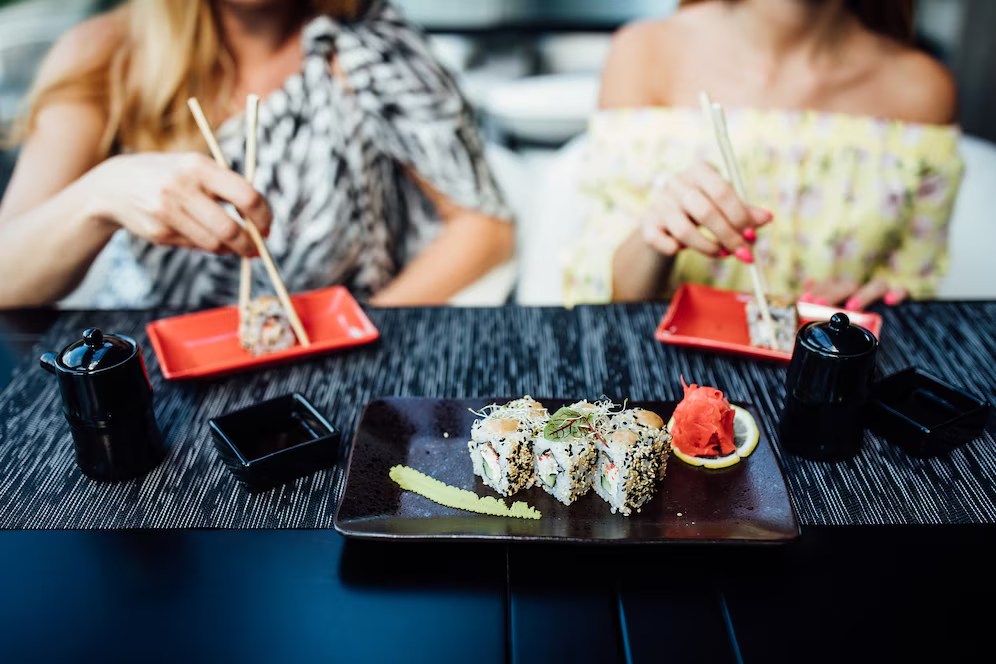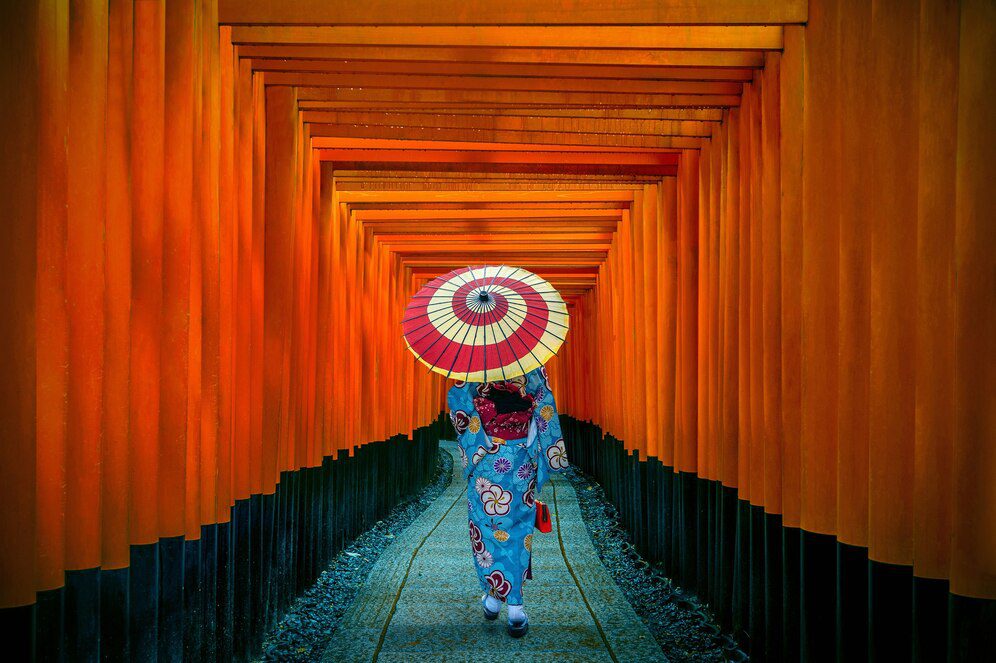If you’re planning a getaway during the Japan Summer season, prepare for vibrant festivals, breathtaking landscapes, and seasonal delicacies that highlight the country’s rich culture. The hot Summer Japan months, from June to August, transform cities and countryside alike into lively destinations for travelers seeking adventure, relaxation, and cultural experiences.
This guide covers the best time to visit Japan in Summer, highlighting must-see attractions, insider tips, and local experiences to ensure you make the most of your Summer season in Japan. From scenic mountains and serene beaches to bustling city events, discover everything you need for an unforgettable Japan Summer adventure.
Suggested Read: Japan Monuments: Landmarks of Heritage, Harmony, and History
Understanding Japan’s Summer Climate
Summer months in Japan span from June to August, characterized by high temperatures and humidity. While the heat can be intense, it’s also a time when the country comes alive with numerous festivals and outdoor activities.

|
Category |
Details |
|
Temperature (High) |
High 30-35°C Low: 22°C-25°C Average: 25°C-32°C |
|
Precipitation & Rainfall |
High rainfall in late June to early July, on average 167.7 mm |
|
Humidity (in %) |
78% to 83% relative humidity during July and August |
|
Average Sunset Time |
Around 7:00 PM to 7:30 PM |
Why Visit Japan in Summer?
![]()
Despite the warmth, the Summer season in Japan is packed with unforgettable experiences. Celebrate traditional festivals like Obon and Tanabata, or marvel at spectacular fireworks displays lighting up the night sky. Nature enthusiasts can enjoy the vibrant hydrangea blooms or retreat to cooler escapes in the Japanese Alps and Hokkaido.
One of the perks of visiting during hot Summer Japan is fewer crowds compared to spring or autumn, often allowing for better deals on accommodations and a more relaxed travel experience. This makes it an ideal must-see in Japan Summer for both cultural and natural adventures.
Transportation in Japan

Getting around Japan is a breeze thanks to the country’s efficient and reliable transportation network. The high-speed Shinkansen (bullet train) connects major cities like Tokyo, Kyoto, and Osaka, while local trains and buses provide easy access to more remote destinations.
In cities, the extensive subway systems are clean, safe, and punctual. Taxis are also readily available, especially at night when trains and buses are less frequent.
Suggested Read: Japan in July: Your Complete Guide
Top Places to Visit in Japan During Summer
Explore Japan’s diverse attractions, from vibrant cities to serene landscapes, offering unforgettable experiences during the summer season.

Hokkaido
Japan’s northernmost island is a summer haven, with temperatures hovering around a pleasant 22°C (72°F). Top attractions include:
- Sapporo Beer Museum – Learn the history of Japan’s oldest brewery
- Odori Park – Stroll through Sapporo’s lush, 1.5km oasis
- Furano and Biei – Marvel at rolling lavender fields in full bloom
Getting there: Fly to New Chitose Airport or ride the Shinkansen bullet train. Get around via trains, buses, taxis or rental cars.
Fees: Museum/park entry: ¥500-¥1000. Lavender farms: free entry, fees for some activities.
Suggested Read: Japan in February: Weather Insights, Festivals & Must-See Attractions
Okinawa Islands
This subtropical archipelago boasts crystal waters and white sand beaches. Must-sees:
- Shuri Castle: Explore the restored palace of the Ryukyu Kingdom
- Churaumi Aquarium: Meet whale sharks and manta rays in one of Japan’s best aquariums
- Emerald Beach: Snorkel, kayak or just relax on this picture-perfect stretch of sand
Getting there: Fly to Naha Airport. Get around via buses, taxis, rental cars or ferries between islands.
Fees: Shuri Castle and Churaumi Aquarium: ¥500-¥2,000. Beach activities may cost extra.
Kamikochi
Nestled in the Japanese Alps, this lush valley offers a cool mountain retreat. Highlights:
- Taisho Pond – Admire the iconic view of the Hotaka Mountains reflected in the still waters
- Kappa Bridge – Walk across this wooden suspension bridge, the symbol of Kamikochi
- Hiking trails – Follow the pristine Azusa River past tranquil marshes and dense forests
Getting there: From Tokyo, take the Shinkansen to Matsumoto, then ride the Kamikochi Line bus to the Kamikochi Bus Terminal.
Fees: Park entry is free. Some trails and onsen charge small fees (around ¥500-¥1000).
Nikko
This historic town, a UNESCO World Heritage site, is known for its ornate shrines and temples. Top spots:
- Toshogu Shrine – Admire the lavish carvings and gold leaf adorning this 17th-century mausoleum
- Lake Chuzenji – Cruise, kayak or SUP on this serene lake formed by an ancient volcano
- Kegon Falls – Feel the power of this 97-meter waterfall, one of Japan’s tallest
Getting there: From Tokyo, take the Tobu Railway or JR trains to Nikko Station (around 2 hours). Get around via local buses and taxis.
Fees: Toshogu Shrine: ¥1,300. Combination passes available for multiple sites. Lake activities cost extra.
Suggested Read: Japan in August: Your Complete Guide to Matsuri Magic
Aomori
Famous for its summer Nebuta Matsuri festival, Aomori also offers cultural and scenic attractions:
- Sannai-Maruyama Ruins – Step back in time at this Jomon-period settlement, with reconstructed pit dwellings and artifacts
- Hirosaki Castle – Stroll the extensive grounds surrounding this feudal castle, especially lovely during cherry blossom season
- Hakkoda Mountains – Ride the ropeway for panoramic views over the highlands and volcanic peaks
Getting there: Fly to Aomori Airport or take the Shinkansen to Shin-Aomori Station. Local trains and buses provide access around the prefecture.
Fees: Sannai-Maruyama Ruins: ¥400. Hirosaki Castle: ¥320. Hakkoda Ropeway: ¥1,850 round trip.
Matsumoto
Home to one of Japan’s most beautiful original castles, Matsumoto offers history and natural beauty:
- Matsumoto Castle – Explore this 16th-century “Crow Castle,” one of Japan’s few remaining original castles
- Nakamachi Street – Stroll past beautifully preserved old merchant houses and sake breweries
- Kamikochi – Take a day trip to this scenic alpine valley for hiking and onsen soaks
Getting there: From Tokyo, take the JR Azusa or Super Azusa limited express to Matsumoto (around 3 hours). Local buses and taxis available.
Fees: Matsumoto Castle: ¥700. Kamikochi: free entry, fees for some activities. Nakamachi: free.
Mount Fuji
Japan’s tallest peak is an icon of the country. Summer is the official climbing season, but the Fuji Five Lakes region offers scenic views and outdoor adventures year-round:
- Lake Kawaguchi – Enjoy the classic postcard view of Mount Fuji rising above this cobalt blue lake
- Chureito Pagoda – Admire Fuji from this vermillion five-storied pagoda, especially spectacular in autumn
- Fuji-Q Highland – Brave some of the world’s fastest, tallest, and steepest roller coasters at this theme park
Getting there: From Tokyo, take the JR Chuo Line to Otsuki, then transfer to the Fujikyu Railway for Kawaguchiko (around 2-3 hours total). Buses and taxis available.
Fees: Fuji climbing fee: ¥1,000. Theme park and attraction fees vary. Many viewpoints and hikes are free.
Suggested Read: Japan in October: Experience Autumn Magic
Top Activities to Do in Japan During Summer

- Attend Traditional Festivals (Matsuri): Experience the lively atmosphere of festivals in Japan during Summer, like Kyoto’s Gion Matsuri, featuring grand processions of ornate floats.
- Enjoy Fireworks Festivals: Japanese fireworks (hanabi) are a summer staple, with dazzling displays held across the country. The Sumida River Fireworks Festival in Tokyo is one of the most famous.
- Hike in the Japanese Alps: Escape the heat and humidity by hiking in the scenic Northern Alps, with popular destinations like Kamikochi and Murodo offering cooler temperatures and breathtaking views.
- Visit Lavender Fields in Hokkaido: From late June to early August, Hokkaido’s lavender fields burst into bloom, creating a stunning sea of purple. The famous Farm Tomita in Furano is a must-visit.
- Indulge in Summer Foods: Seasonal foods in Japan during Summer include refreshing treats like sushi, kakigori (shaved ice), cold somen noodles, and grilled unagi (eel). Be sure to try local specialties in each region you visit.
- Relax on the Beach: Head to the Okinawa Islands or the beaches along the Shonan coast for sun, sand, and surf. Many beaches offer activities like snorkeling, paddleboarding, and beach volleyball.
Summer Travel Tips
- Opt for natural fabrics like cotton and linen to stay cool in the humid weather. Don’t forget a hat, sunglasses, and sunscreen for sun protection.
- Carry a reusable water bottle and take advantage of the numerous vending machines selling cold drinks. Try local favorites like Pocari Sweat or Mugicha (barley tea).
- Most indoor spaces in Japan, including trains and shops, are well-air-conditioned. Duck inside to cool off when the heat becomes too much.
- Be prepared for sudden downpours by carrying a lightweight raincoat or umbrella. If possible, schedule outdoor adventures for early morning or late afternoon to avoid the midday heat.
- Many hotels and ryokans offer reduced rates during the summer months. Look for special promotions and packages to save on your accommodations.
Suggested Read: Japan in September – Autumn Colors, Festivals & Cooler Weather


FAQs
How hot is Japan in summer?
Temperatures often exceed 30°C (86°F), with peaks of 35°C (95°F) in July and August. The heat is accompanied by high humidity, making it feel even hotter.
Can you swim in Japan during the summer?
Yes, swimming is a popular summer activity in Japan, especially at beaches in Okinawa, Shonan, and other coastal areas. Just be aware of any posted warnings or restrictions.
What is the average temperature in Japan in summer?
Average temperatures range from 25°C to 32°C (77°F to 90°F), depending on the region. Cities like Tokyo and Kyoto can be particularly hot and humid.
Is it sunny in Japan during summer?
Yes, summer days in Japan are generally sunny, although the humidity can make it feel quite oppressive at times. Occasional rain showers are also common.
Is it windy in Japan during summer?
While not known for strong winds, coastal areas may experience occasional sea breezes. Typhoons can bring strong winds and heavy rain, typically from July to October.
What clothes to wear in Japan during Summer?
Light, breathable clothing is essential. Opt for shorts, skirts, t-shirts, and sandals made from natural fabrics like cotton and linen. Don’t forget a hat and sunglasses for sun protection.
Is Japan crowded during Summer?
While summer is a popular time for domestic travel, it’s generally less crowded than the peak spring and autumn seasons. However, popular tourist attractions in Japan in Summer, like Mount Fuji and the beaches of Okinawa, can still get quite busy.
What are some things to do in Japan in summer?
Attend festivals, hike in the mountains, relax on the beach, visit lavender fields in Hokkaido, indulge in seasonal foods, and explore the many tourist attractions in Japan in Summer, from temples to theme parks.
What can I see in Japan in summer?
During the Summer season in Japan, some must-see sights include Mount Fuji, the historic temples of Kyoto, the tropical islands of Okinawa, the lavender fields of Hokkaido, and the scenic Japanese Alps. Don’t miss popular photography spots like Fushimi Inari Shrine in Kyoto or the Tokyo Skytree, which are especially vibrant under the summer sun.
What adventure activities can I do in Japan in Summer?
For adventure seekers, hot Summer Japan offers hiking and climbing Mount Fuji, snorkeling and diving in Okinawa, white water rafting, and canyoning in the Japanese Alps. These activities let travelers experience Japan’s natural beauty while staying active.
What are the free things to do in Japan in Summer?
Many temples, shrines, and parks offer free admission, including the famous Fushimi Inari Shrine in Kyoto and Ueno Park in Tokyo. Festivals, fireworks displays, and cultural events are often free to attend as well. Hiking and visiting beaches are other great free activities to do in Japan during Summer.





















